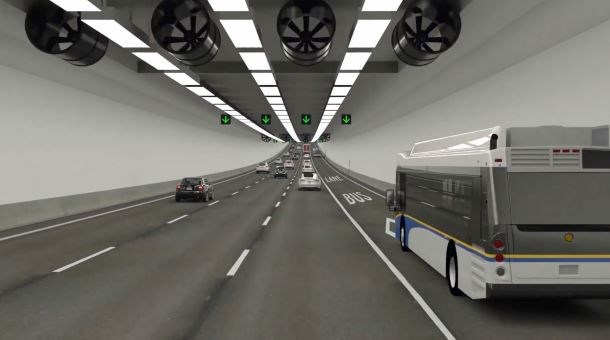A new 8-lane immersed tube tunnel will cost $4.15 billion and is expected to be built by 2030, replacing the current George Massey crossing.
Construction is expected to begin in 2025 after a 3.5-year environmental assessment.
In the meantime, improvements are being made to the Steveston interchange and other peripheral projects.
Although the province has been in talks about funding with the federal government, there is, so far, no commitment from the federal government.
“We certainly hope to get significant federal contribution to this… the discussions we’ve had with the federal government have been very productive in this regard,” said Rob Fleming, Minister of Transportation and Infrastructure, at Wednesday’s announcement at Richmond City Hall.
But he confirmed the money isn’t committed from the federal government, which was a sticking point for Steveston-Richmond East Conservative MP Kenny Chiu, who is running for re-election and said a Conservative government would be committed to this project.
“We’ll be backing this project up — we know that this is not just hurting people’s lives but it’s also our province’s and economy’s critical artery in the infrastructure,” Chiu told the Richmond News.
At Wednesday’s announcement, Richmond Mayor Malcolm Brodie said it’s been a “long journey” to get to this announcement, saying fixing the crossing has been discussed since about 2006.
“This will finally move this project forward with the appropriate solution,” Brodie said.
Richmond city council was vociferously opposed to the previous BC Liberal government plan of a 10-lane bridge largely because it would have encroached on farmland and greenspace.
Brodie added the new tunnel will play a “huge part” in moving goods and services around the region as well as getting employees to jobs.
“This is important for the people of Richmond… the families of our city and for business and economic development,” Brodie said.
While the new tunnel will have a five-metre-wide two-directional multi-use path and dedicated rapid bus lanes, the province has concluded future rail is not warranted for this transportation corridor and rather the focus will remain on transit.
“The rapid bus actually provides more flexibility to end destinations than a fixed rail line where (riders are) stranded to make a connection,” Fleming told the News.
He added TransLink hasn’t identified this corridor for rail because the population of Ladner and White Rock won’t grow enough to support it.
He pointed out rapid buses are also TransLink’s preferred option.
After reviewing its business case looking at either building an eight-lane bridge or an eight-lane tunnel, the province decided on the latter to replace the current four-lane tunnel.
The current tunnel doesn’t meet current seismic standards and will be decommissioned after the new tunnel is built, although previously the province considered keeping it as a utility corridor.





